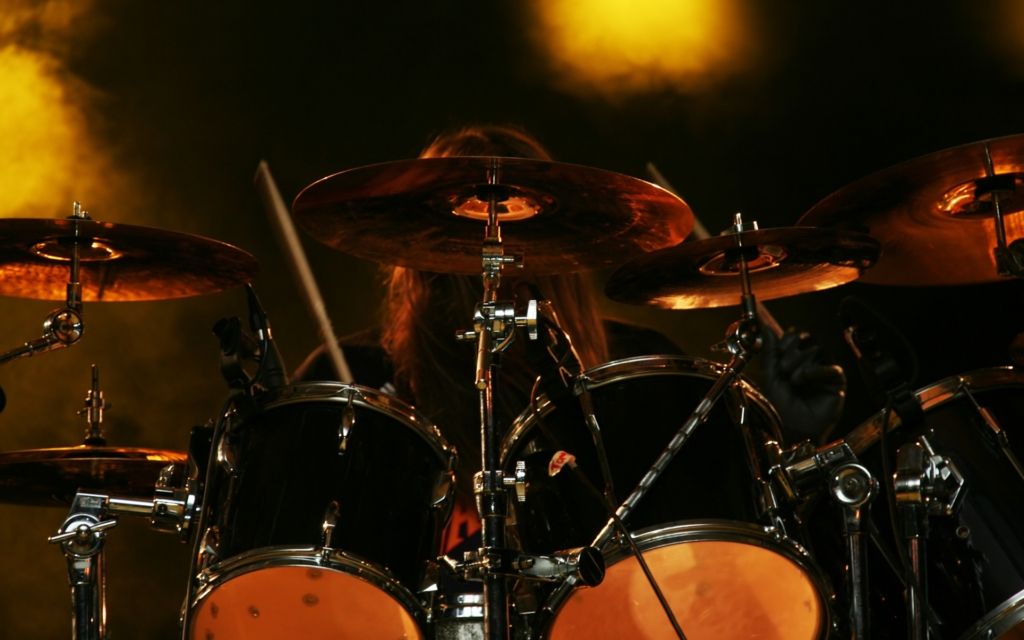Drum triggers have steadily been getting more and more popular over the years for gigging drummers. Having a hybrid drum kit with access to electronic sounds is invaluable for pro players, so learning how to use triggers is a good idea if you’re looking to get more work.
In this guide, I’m going to explain exactly what drum triggers are and I’ll break down how to use them with your drum kit. I’ll also mention a few things that you need to have a working trigger setup.
Contents
What is a Drum Trigger?
Drum triggers are small devices that attach to your acoustic drum kit. They detect vibrations from the shells and turn those into signals to send to a module. When the signals hit the module, sounds will be triggered.
Drummers use triggers for a few different reasons. The biggest one is to be able to play electronic sounds in an acoustic drum setup, but there are a few other creative ways to use them.
You get two types of acoustic drum triggers – Piezo pickups and triggers with casing. I much prefer the latter, as Piezo pickups stick to the drum head and never seem to be as sensitive.
Dedicated triggers with casings are far more reliable, and most companies tend to make those nowadays. So, the technology is constantly improving with every new product brought to the market.
Everything You Need to Set Up Drum Triggers
Triggers
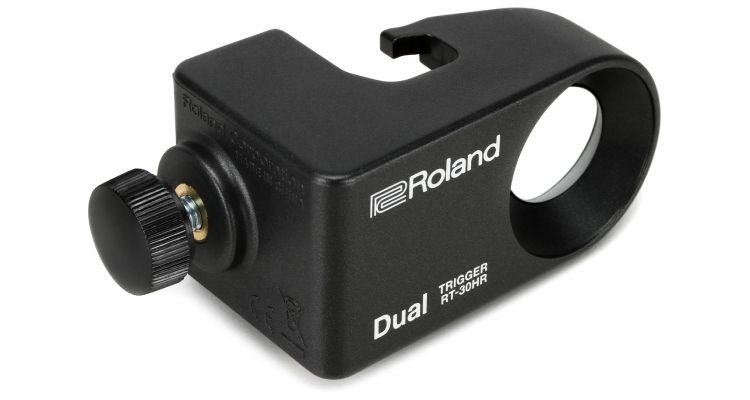
Triggers are naturally the most important part of setting up a hybrid drum set, but what triggers should you actually use?
The three biggest companies that make good triggers are Roland, ddrum, and Yamaha. You could get decent ones from each, but I’d mostly recommend Roland triggers.
Roland sell two very specific triggers that work brilliantly in any hybrid setup. The Roland RT-30HR can be placed on snare drums and toms, while the Roland RT-30K can be placed on a bass drum. Both of these triggers work well with any drum module.
In my experience, the Roland triggers just perform a lot more reliably. They’re regarded as industry-standard options, which is why you’ll see most professional drummers using them over other options.
Electronic Pads
You could technically use drum pads in your setup to get access to electronic sounds, but they’re not as convenient as standard triggers. I’m just briefly mentioning them here as they’re a viable option.
The best kinds of setups use both pads and triggers to unlock more playing possibilities!
Drum Module
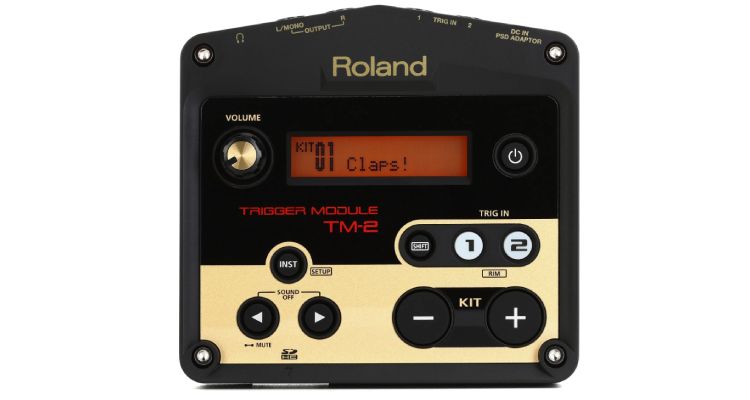
Triggers need to connect to a drum module in order to function, and there are two types that you can choose.
Firstly, you could use a normal drum module that would typically come with an electronic kit. For example, I could use the module from my Roland kit to connect my triggers to. I’d then be able to use the sounds from that module in my setup.
Your next option is to get a smaller module that is specifically designed for drum triggers. In my opinion, this is the better option. These modules are more affordable and they don’t have a wide range of features that triggers won’t allow you to use.
Again, Roland wins in this area. I’d recommend the TM-2 or TM-6 trigger modules. They have some incredible sounds and features.
Electronic Sampling Pad
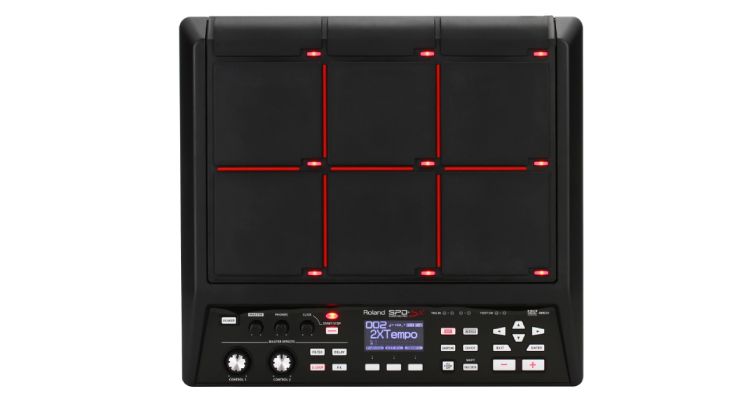
The final option is to use an electronic sampling pad as the brain of your entire setup. In the professional gigging world, most drummers love using the Roland SPD-SX or SPD-SX Pro.
These are electronic drum pads with several playable surfaces to play electronic sounds and samples. You can use them on their own to create and play sounds, but you can also connect your drum triggers to them to push those sounds over to your acoustic kit.
They’re a lot pricier than most trigger modules, but they offer far more usable features that really benefit a live gigging setup.
Setting Up Drum Triggers
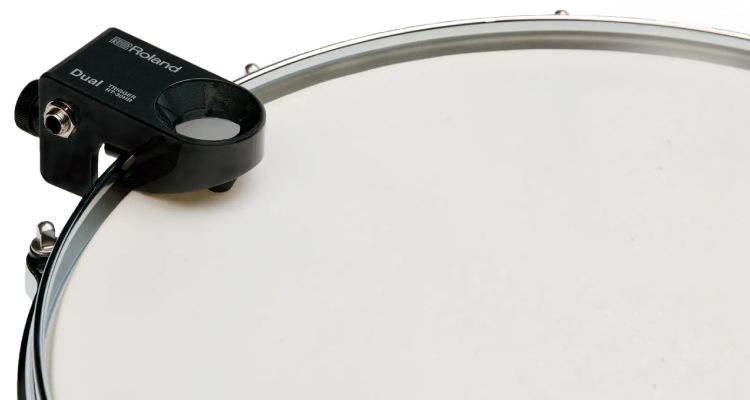
Mounting to Drums
Your first step in setting up triggers is to mount the trigger cases to your drums. You could have triggers on each drum in your setup, but I’d recommend using them on your snare and kick drum to start with. Those are definitely the two most important positions.
You need to mount the triggers to the rims of the shells and ensure that they’re not in the way of your strike zones. The casings are quite durable, but they’ll definitely break if you constantly hit them with sticks.
Once they’re in place and secure, you’ll be ready to connect them to the module or sampling pad.
Connecting
Most triggers require ¼ inch jacks to connect to the module. You just need to plug those cables in and find the trigger input slots on whatever module you’re using.
While this step is incredibly easy, you just need to make sure that your cables are placed cleanly in your setup. I’d recommend using cables that are just long enough so that they run across the ground to get to the module.
If the cables are too short, they’ll be too visible in your setup. If they’re too long, they’ll coil and scrunch up on the floor.
Setting Up the Module
Most drummers like to position their modules and sampling pads to their left. If the module is just next to your hi-hat, you’ll have easy access to the controls.
You’ll need some sort of stand to mount the module on. Otherwise, it’ll need to rest on the floor. It’s worth investing in a decent stand, as it makes life a lot easier when you’re constantly shifting through sounds on the module when playing.
Once the triggers are connected to the module, you’ll need to assign sounds to each one. You’ll then hear these sounds when you play your kit and hear it through whatever speaker system you’re using.
Fine-Tuning Module Settings
The final step is to fine-tune all of your preferred settings on the module. All modules and sampling pads have various features, so you need to spend some time dialing everything you want in.
If you want to import your own samples, you’ll need to load them on using an SD card. Otherwise, you’ll be limited to whatever sounds you already have on your module or sampling pad.
It’s a good idea to get someone else to play your kit and triggers to see what they sound like from a distance. You’ll then have a better idea of what sounds to tweak and refine.
Benefits of Drum Triggers
Consistent Sounds
One of my favorite benefits of triggers is that they allow you to get similar drum sounds no matter where you play. If you have certain settings and samples set for your gig, your kit is going to sound the same in every venue you play.
If you just used acoustic drums, the size and design of a room would have the power to completely change how your shells sound. Drummers often have to tune their drums a bit differently depending on the room. With triggers, you don’t really need to do that.
Electronic Sounds
Having the ability to play electronic sounds is the most obvious benefit of triggers. However, this benefit can’t be understated.
Most modern music has electronic drumming in it. When you play live gigs, the goal is always to recreate whatever sounds were used in the studio recordings. Triggers are one of the only things that make that possible next to electronic sampling pads.
Think of all of the big pop artists in the world like Taylor Swift, Justin Bieber, and Ariana Grande. Every single one of their drummers has to use triggers on stage for this very reason.
It doesn’t stop there, though. You can also use triggers to enhance the acoustic drum sound of your kit. If your snare drum is sounding a bit flat, you can easily trigger a better snare drum sound from your module.
Clarity
The final benefit of using triggers is a big one, and this is the main reason for so many metal drummers using them. You can utilize triggers to make your drum kit sounds a lot more clear.
In the context of metal drumming, a lot of drum parts include incredibly quick double bass drum patterns. At speeds over 200BPM, your bass drum notes start to sound very muddy and unclear.
This is why metal drummers use triggers to get more attack from their bass drums. You hear more of a click sound when you strike the kick drum, and that makes those fast patterns sound a lot cleaner and more audible.
It’s fairly common for people to think that metal drummers are “cheating” by using triggers, but this is the actual reason for it.
Conclusion
If you really want to make a decent living from playing the drums, I highly recommend learning how to use an acoustic drum trigger setup. Acoustic triggers will make you a far more versatile drummer and more and more artists are looking for drummers who use them these days.
They’re really easy to set up, thankfully! Hybrid drumming is what most pro drummers are getting into, so you should head that way too.







